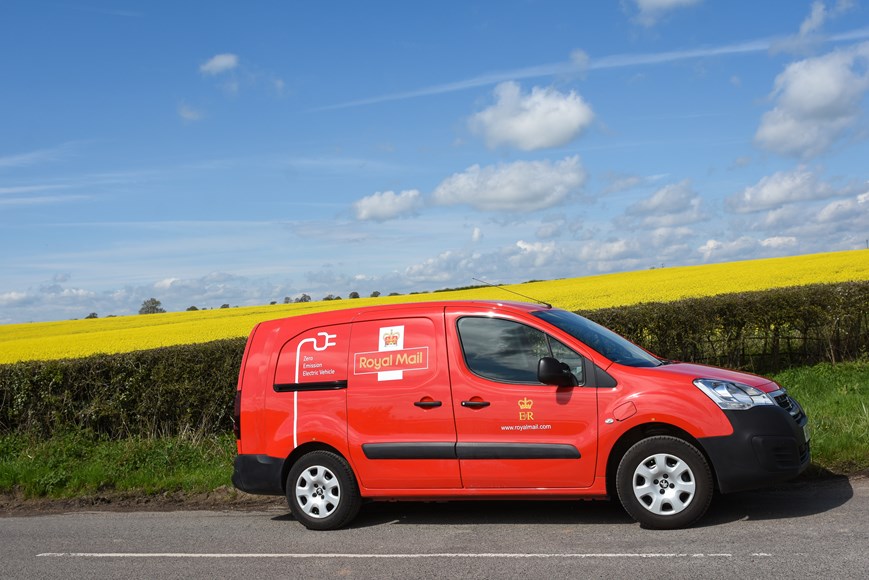Royal Mail is adding another 2,100 electric vans to its fleet over the next year as part of the company’s plans to achieve Net-Zero carbon emissions by 2040.
The new electric vehicles, which will be the first of Royal Mail’s famous red vans to include the new King’s cruciform and livery, will be rolled out from August across the UK. Royal Mail plans for more than half to be on the streets in time for the Christmas shopping period, helping to provide greener deliveries during the busiest time of the year.
Royal Mail already has the largest electric delivery fleet in the UK with around 5,000 vans, and the new additions will increase the total by almost half in just one year, bringing it to 7,100.
Most of the vans will be charged on-site at Royal Mail’s delivery offices via a purchased 100% renewable electricity supply meaning they will be zero-emission. When all 2,100 new electric vans are in use, they are expected to reduce Royal Mail’s total emissions by around 6,000 tonnes of carbon dioxide equivalent per year.
Jenny Hall, Director of Corporate Affairs at Royal Mail, said: “We are proud to take another big step towards our target to be Net-Zero by 2040. Electric vehicles provide a wide range of benefits, reducing noise and air pollution in local communities as well as reducing our impact on the environment. We want as many customers as possible can benefit from zero-emission deliveries to their doorstep.”
Electric vans are an important part of Royal Mail’s fleet strategy. Royal Mail has also introduced hydrotreated vegetable oil (HVO) to fuel many of its heavy goods vehicle fleet, which is a renewable alternative to diesel that produces up to 90 per cent less direct carbon emissions compared to diesel. The fuel was introduced in June 2023 and has already saved more than 30,000 tonnes of carbon dioxide equivalent.
Royal Mail already has the lowest reported carbon emissions per parcel of any UK delivery company* and aims to maintain this position in the long term. The company’s ‘Steps to Zero’ environment strategy set a goal of achieving Net-Zero by 2040. The company has already reduced Scope 1 and 2 emissions by 18% in two years, with a target to achieve a 50% reduction by 2030.
Source: Royal Mail Group
